Affiliate links on Android Authority may earn us a commission. Learn more.
Drop tests, static electricity, dust exposure & more - how Samsung tests the Galaxy S5
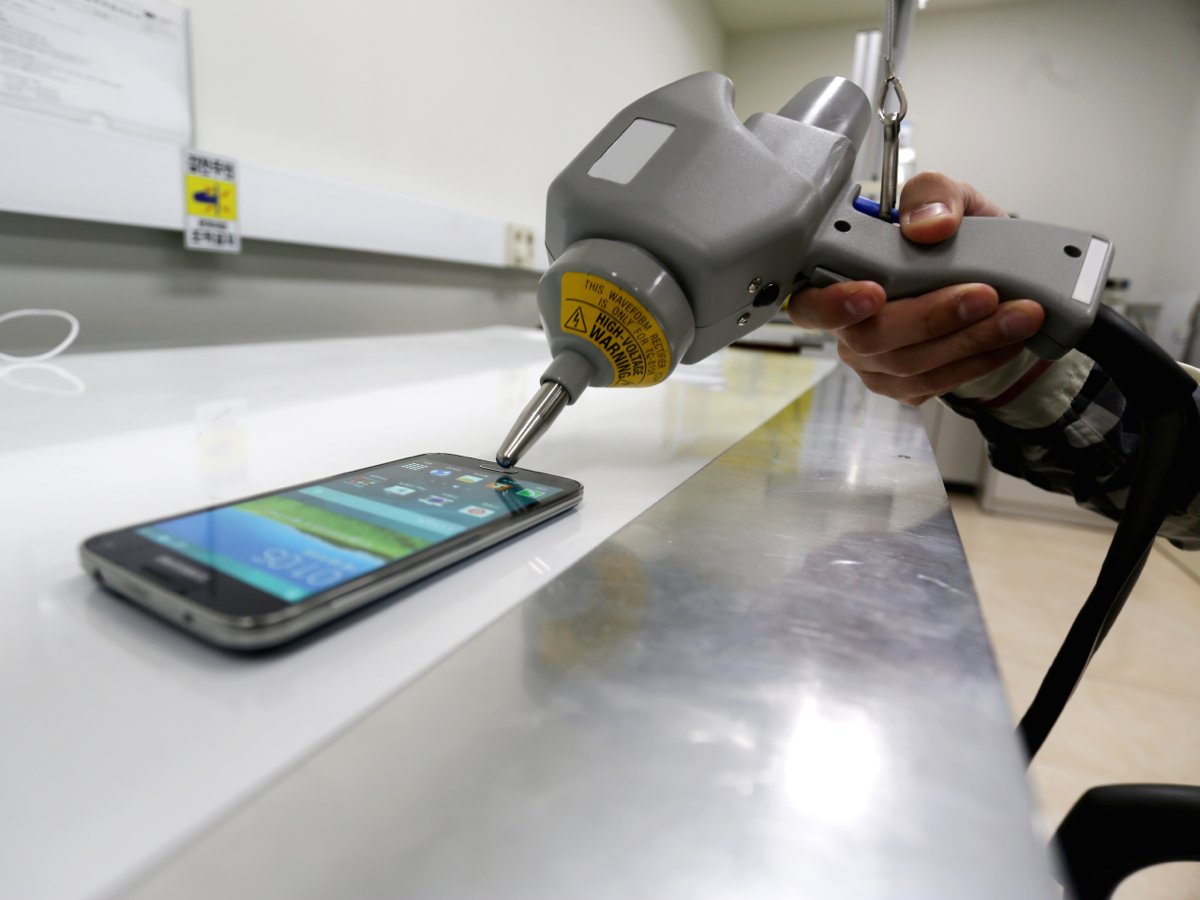
You’ve heard about automotive crash testing and crash tests for motorcycle helmets. Samsung, too goes through great lengths to ensure its flagship Galaxy S5 can stand up to its claims of water- and dust-resistance, as well as mandated radiation-related safety standards.
Throw in radiation meters, static electricity, five-foot drops and repetitive button pressing into the mix and you have some extreme durability testing!
Here are some of the devices and methodologies that Samsung uses at its testing facility in Korea to ensure its design is up to spec. Don’t forget to check out the crash-test dummy.
Radiation testing. No matter how research claims that mobile phones don’t emit enough radiation to cause cancers and other disorders at the cellular-level, fact is that these devices do emit radiation through radio waves. For mobile phones, this is measured through the specific absorption rate (SAR) defined by the FCC and other regulatory agencies. Samsung uses a mix of foam-coated walls and ceilings, antennae and liquids that mimic the human body, in order to determine how much radiation its devices give off.
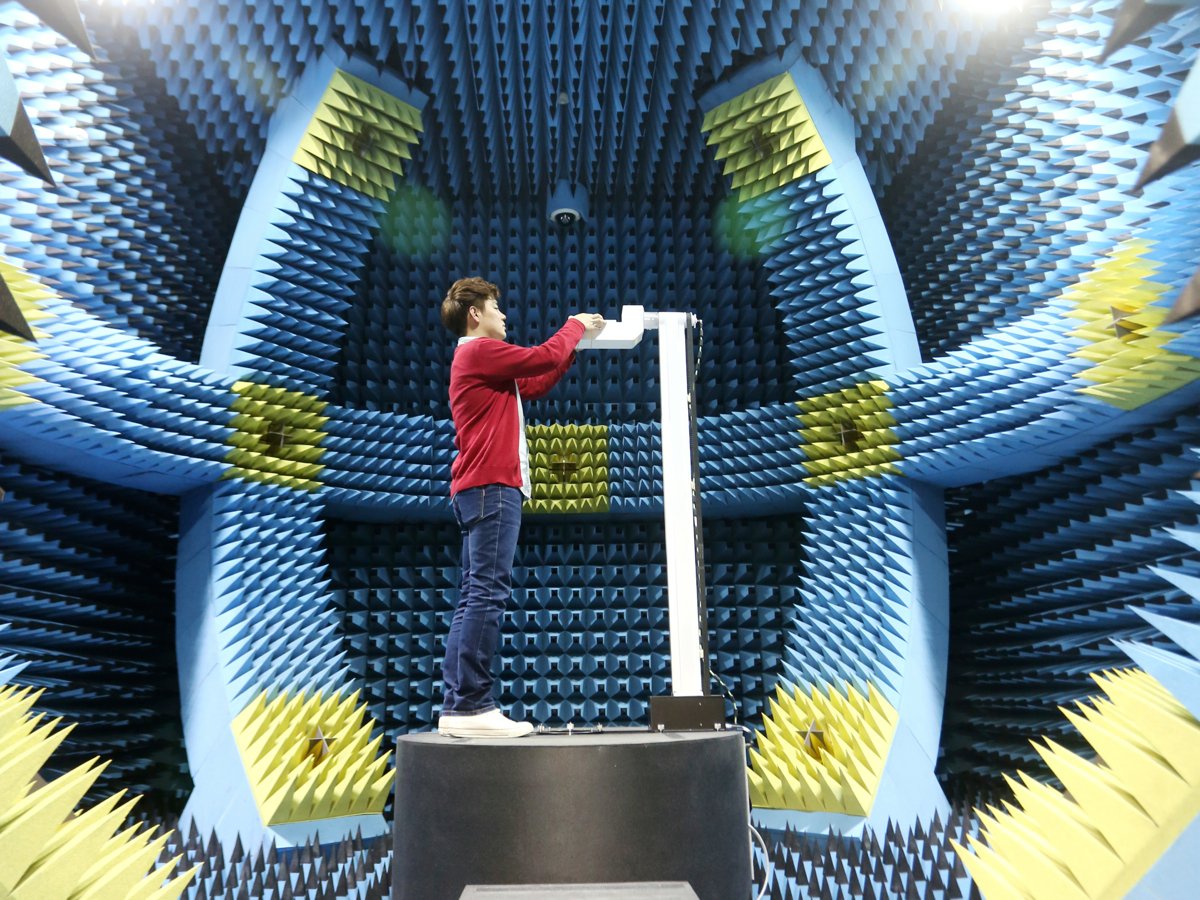
Durability tests. The Galaxy S5 is marketed as a water- and dust-resistant device, which should help ward against damage from spills and exposure to dusty environments.
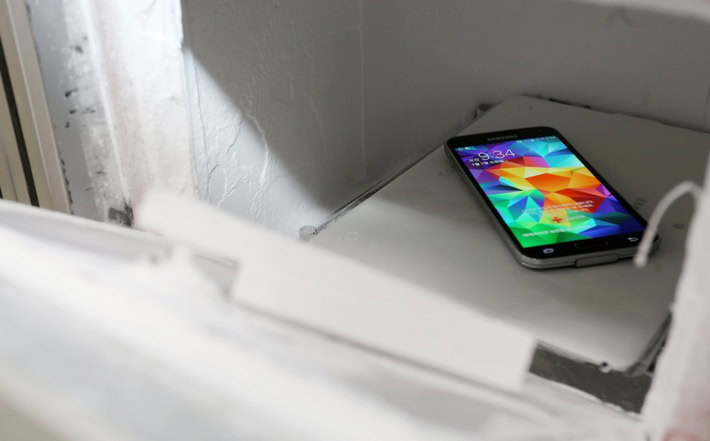
Samsung also uses a device for dropping the phone from various heights and positions, using high-speed cameras to determine points of potential stress and damage. That’s definitely more scientific than the drop tests we do!
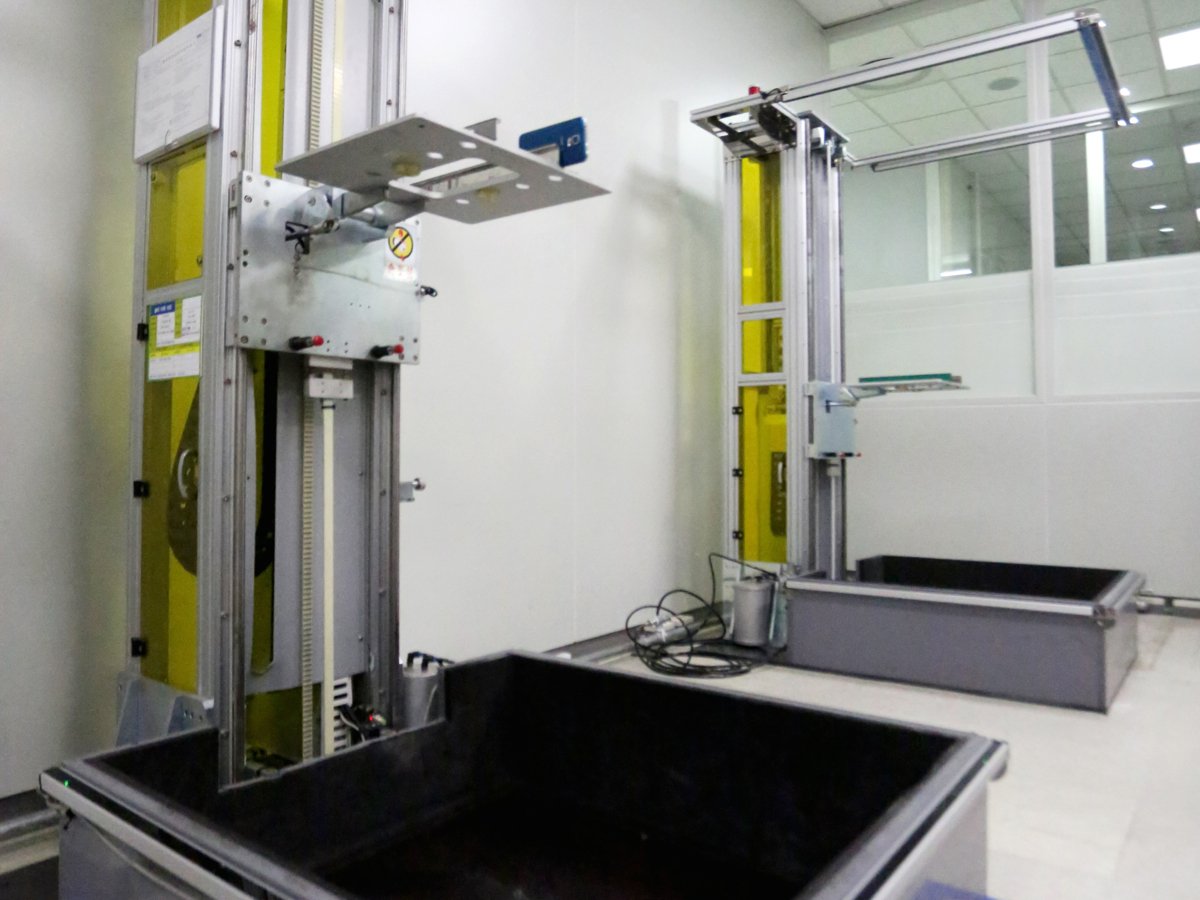
Samsung also tests for static electricity (featured image above), which can fry the electronics inside a device when your hands have all those extra electrons from physical activity. And if you’re curious about that home button? Yes, Sammy also presses it thousands of times to see if it will give out.
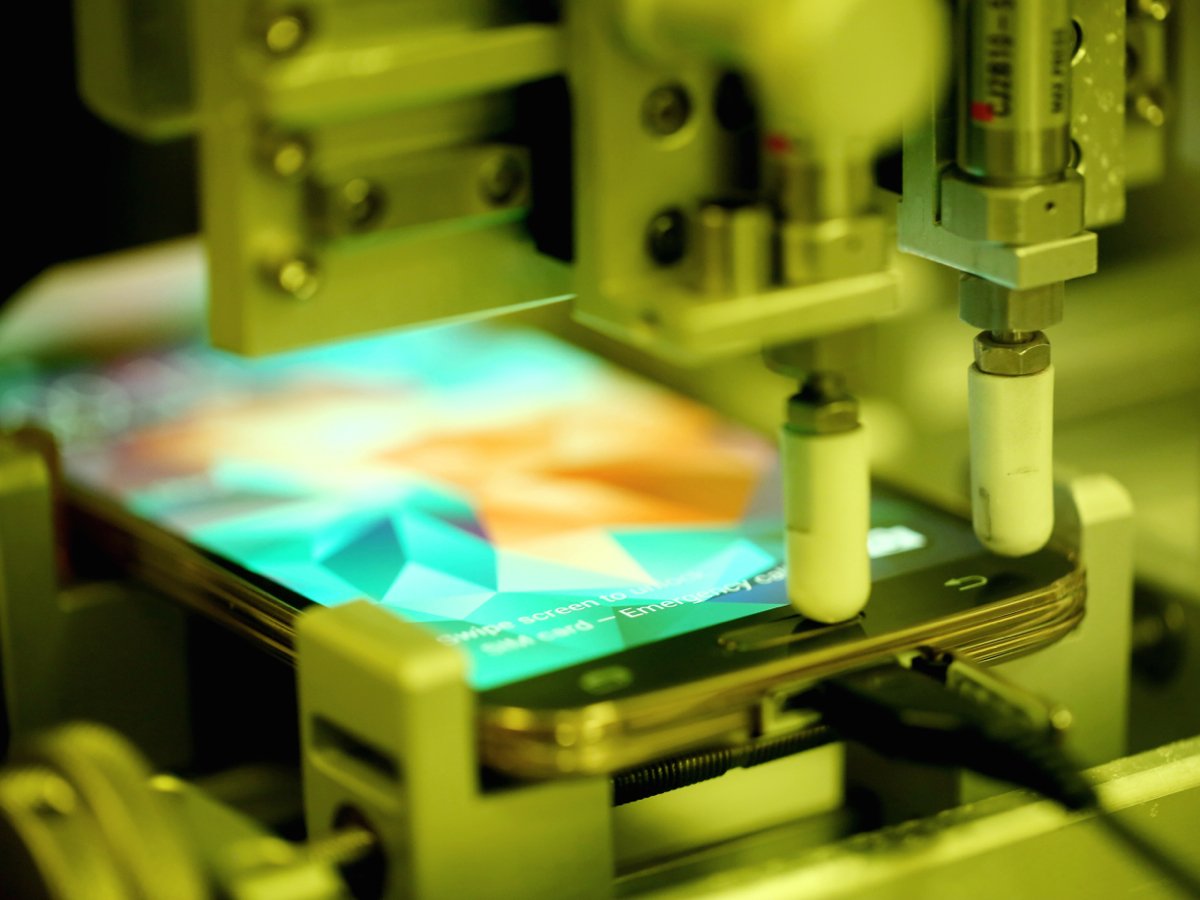
Sensor tests. Now what’s a phone without great audio? And what’s a smartphone without a decent camera? Samsung also tests the S5 for audio quality, particularly the speaker volume, microphone sensitivity, and how well these perform when set against a human face.
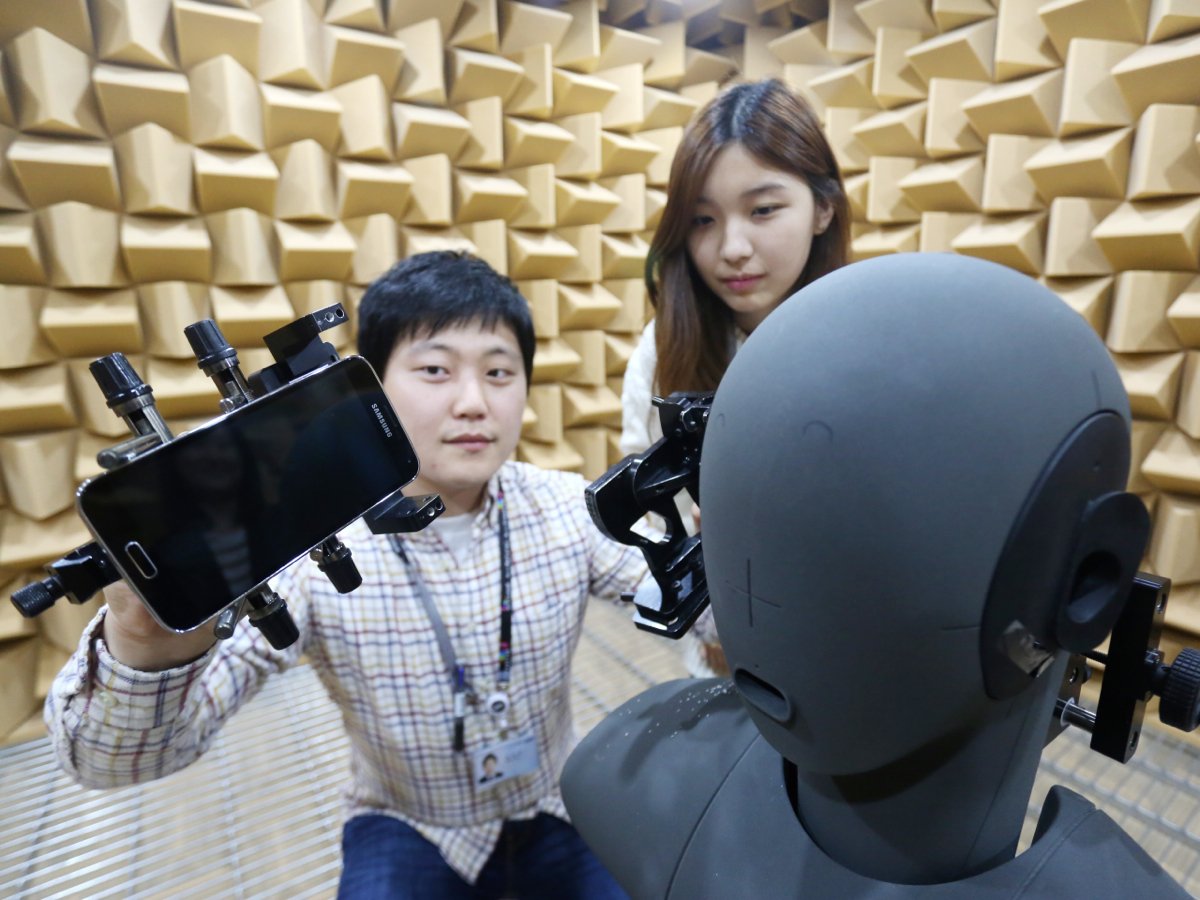
What’s interesting is that engineers fine-tune the S5 differently depending on the intended market. For example, models meant for European markets have different volume and audio sensitivity compared with those meant for Asian markets, taking into account the expected noise levels in these scenarios.
Of course, these scenarios are done in controlled environments, which means the real-world might result in different levels of stress. Still, you can hand it to Samsung for its due diligence. While you probably won’t immerse your smartphone in a bag of flour, it’s probably going to get a few dust particles and pocket lint wedged into in-between spaces due to regular use.
Interested in learning more about the Galaxy S5? Here’s our review and first thoughts. Do you think Samsung’s controlled testing is extreme enough, or is there no match for real-world testing when it comes to a device you carry around in your pocket all day?